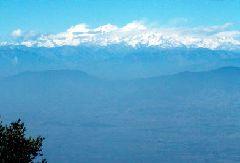Using the Five Themes of Geography
with the Himalayan Region

The five themes of geography were developed by
the National Geographic Society in order for teachers to organize geographic
concepts for instruction. The themes are place, location, region, movement,
and human-environment interaction.
www.nationalgeographic.com/resources/ngo/education/themes.html
The following resources provide
ideas, lessons, and explanations on the five themes:
www.education-world.com/a_lesson/lesson071.htm
This lesson planning articles provides 25 activities
related to teaching geography using the five themes.
www2.una.edu/geography/statedepted/themes.html
Great website for providing questions for each
of the five themes as well as explanatory information.
www.davis.K12.ut.us/etc./5themes/INDEX.htm
A Corel 7 presentation for ninth graders on the
five themes developed by Kathy Evans.

Mt.Everett
Activities to integrate the five
themes with the Himalayas:
1) View the film Bhutan: the Last Shangri-La from the PBS Series
on the Living Edens. (www.pbs.org/edens/bhutan/Bhu_people.htm
for activities to download on the film.)
The film highlights the natural history of this Himalayan country within
the context of a Tibetan Buddhist legend of the interdependence of animals.
There is some discussion of human-environment interaction as Buddhist beliefs
support a reverence for life.
For other sites on Bhutan, check out www.cia.gov/publications/factbook/goes/bt.html
for maps, absolute location, background, and other information on the economy,
people, government, military, communications and transnational issues.
More information is available through the search engine from the Library
of Congress: www.loc.gov
2) View the film Ancient Futures: Learning from Ladak and
from the Annenburg Film Collection Continent on the Move the film
on migration. Both films discuss the migration of people to the cities:
compare and contrast the reactions of people to their dilemma—to stay in
their communities or to move to the cities to find work. The theme
is movement.
Assessment Activity:
To understand whether the students understand the five themes, they
can research three regions of the world, using a matrix. Place
the three regions of the world along the horizonal axis; place the four
themes on the left hand side: place, abolute locations; movement of people
and ideas(notable migrations, changes in religious and cultural ideas);
and human-environment interactions ( the role of technology, architecture,
engineering, agriculture, forestation, population density, etc.).
A variant on the activity would be for the teacher to supply information
for column one on the first region (to create a model for students to follow)
and then for the subsequent regions, each student researches one region.
The students will pair up and complete their matrices with the information
from one other student.